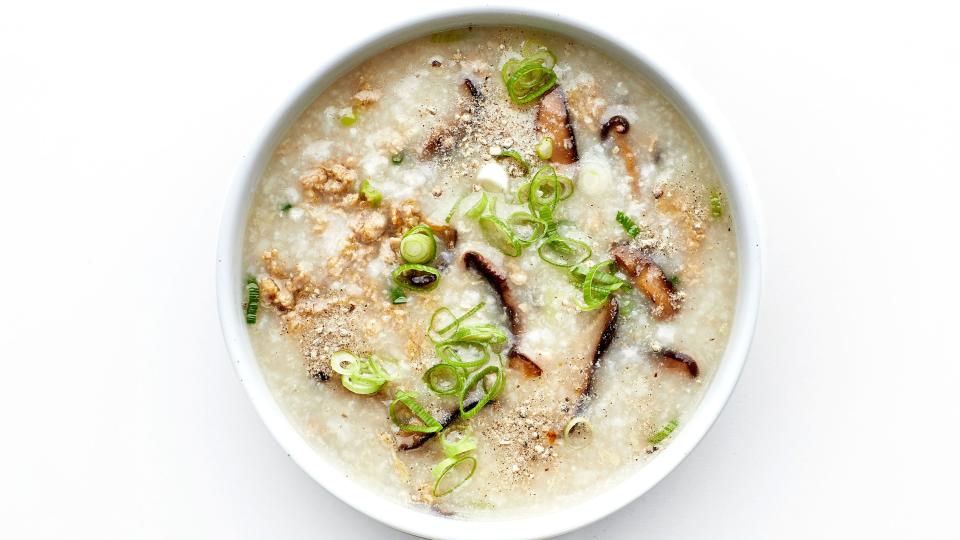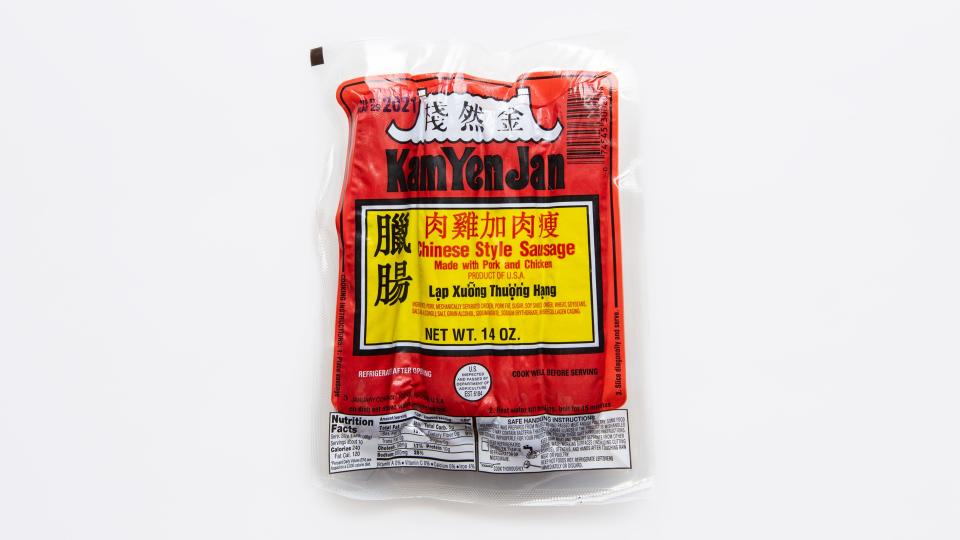All You Salty-Sweet Fans, Chinese Sausage is For You
All of my best memories with family center around food: getting up early with my parents on a brisk October morning to catch a street vendor selling jianbing, my dad’s favorite breakfast growing up; drinking tea with aunts and uncles while eating our body weight in lychee; lingering at the dinner table, bellies full from a meal by the best chef in town—my mom.
After moving away from my North Carolina home, recreating the flavors of my family’s cooking has helped me keep them close. I’ve found that nothing beats lap cheong (the Cantonese name for Chinese sausage) for a quick fix when nostalgia hits, reminding me of the fried rice my mom makes whenever I visit.

Chinese sausage dates back to the period of Northern and Southern Dynasties (~300–500 AD). An almanac from the period describes a unique starch-free sausage-filling-technique that was developed to preserve meat and is still followed to this day. Southern families traditionally made a supply of sausages in preparation for the new year, and many still consider homemade sausages a New Year’s dinner staple.
Chinese sausage is a broad umbrella category encompassing many types of sausage, both air-cured and smoked, from all parts of China as well as Vietnam and Thailand. It can be made from fresh pork, pork fat, livers, and, sometimes, chicken, and tends to be as sweet as it is savory, with a rich, dense, emulsified texture. According to Baidu, Chinese sausage falls into two big categories: a sweet variety from the Canton region, often preserved with soy sauce, salt, and sugar, and a spicy one, made with chili, from Sichuan. Since the sweet kind is by far the most prevalent in Chinese supermarkets in the U.S., I normally compensate by adding plenty of spicy ingredients.
In terms of brand preference, my local Chinese supermarket carries Kam Yen Jan, and I’ve been happy with the pork-and-chicken variety. The kind made with only pork is more authentic, but those made with both pork and chicken have a lower fat content. In general, look for a dried sausage with a marbled pink-and-white exterior in the refrigerated section.

I drop a few slices of Chinese sausage into any dish that could use a rich salty-sweet punch. It goes with everything and lasts forever in the fridge, making it a true lifesaver for me and my stubborn inability to plan meals ahead of time. It can be steamed or crisped in a pan, then eaten alone or added to congee, stir-fries, and soups.
The possibilities are endless, but here are some ideas to get started with:
Fried Rice with Chinese Sausage
Beat 2–3 eggs and scramble in hot oil until runny but almost cooked through. Scrape into a bowl and set aside. Add 2 cups cooked rice and fry until fluffy, adding water a spoonful at a time if needed (note: you might not have to do this if the rice is fresh, but I like to use leftovers!). Add 2 Chinese sausages, sliced, the cooked eggs, and 1 scallion, sliced, and continue to fry 1–2 minutes, until sausages are cooked through. Season with salt to taste and garnish with more sliced scallion.
Cabbage and Chinese Sausage Stir-Fry (a.k.a. Dad’s Specialty)
Halve a green cabbage and roughly chop the leaves into squares (you could substitute with Napa or any other kind, but this is just how my dad makes it). Fry the cabbage with 2 Chinese sausages, sliced, and soy sauce to taste in hot oil until the cabbage has wilted and the sausage is cooked through.
Indomie with Chinese Sausage
Fry an egg and a sausage, sliced, on separate sides of a pan while boiling Indomie instant noodles, my favorite brand of stir-fry noodles. When I’m feeling fancy, I add shrimp and spinach to the pan. After draining, put the noodles in a bowl and mix with flavoring packets. Add the fried egg and sausage and garnish with sliced scallions. (If you’re making noodles in broth, feel free to drop the egg and sliced sausage in to boil as the noodles cook.)
Kam Yen Jan Lap-Xuong Sausage (Pack of 3)
$19.00, Amazon
Helen Qu is an astrophysics grad student who loves cooking, baking, and trying new recipes in her free time.
Originally Appeared on Bon Appétit


